As we all know, a dirty dryer not only takes longer to dry your clothes but also poses a serious fire hazard.
Lint, dust and debris can easily accumulate in the lint trap, exhaust ducts, and vent hood, reducing the airflow and creating a risk of fire.
We know that keeping your dryer clean and well-maintained not only ensures the longevity of the machine but also keeps your family safe from fire hazards.
In this guide, we will walk you through the essential steps of cleaning your dryer like a pro, including detailed instructions on how to empty the lint trap, clean the exterior and drum, maintain the venting system and check the exhaust ducts and vent hood.
This guide is designed to be easy to follow and will help you keep your dryer running smoothly, efficiently and safely for years to come.
Additionally, we will also cover the safety measures and precautions to avoid fire hazards and how often you should clean your dryer.
We believe that this guide will be an excellent resource for homeowners and renters alike who want to ensure their dryer is in top working order.
1Types Of Dryer

When it comes to drying your clothes, there are several options available on the market to suit your individual needs. From gas dryers to electric dryers, ventless dryers to heat pump dryers, the choices can be overwhelming.
Each type of dryer has its own set of features and benefits, making it important to consider your specific needs and preferences when choosing the right one for you.
Here is an unordered list:
- Vented Dryers
- Condenser Dryers
- Heat Pump Dryers
- Gas Dryers
- Washer-Dryer Combo
- Portable Dryers
- Stackable Dryers
- Clothesline or Racks
It's important to weigh the pros and cons of each type of dryer before making a purchase to ensure you choose the one that best fits your needs and budget.
This list will provide you with an in-depth look at the different types of dryers available on the market, helping you make an informed decision.
1.1Types Of Electric Dryer?

When it comes to electric dryers, there are several options available to suit your individual needs.
It comes from standard electric dryers to high-efficiency electric dryers, smart electric dryers to electric dryers with heat pump technology, the choices can be overwhelming.
Here is types of electric dryers list:
- Vented Dryers
These are the most common type of electric dryers and use a venting system to remove the hot air and moisture from the dryer. They require a venting duct to the outside of the home.
- Condenser Dryers
These dryers do not require a venting system, as they condense the moisture from the hot air and collect it in a container that needs to be emptied periodically.
- Heat Pump Dryers
These are a type of condenser dryers, but they use a heat pump to recycle the heat from the air rather than generating new heat. This makes them more energy-efficient than standard condenser dryers.
- Washer-Dryer Combo
These are a combination of a washing machine and a dryer, and they are designed to wash and dry clothes in one unit.
- Portable Dryers
These are small, compact dryers that can be moved around easily and can be a good option for smaller spaces or for people who move frequently.
- Stackable Dryers
These are dryers that can be stacked on top of a washing machine, making them a good option for people who have limited space in their laundry room.
Note: There are also electric dryers with different features such as smart technology, steam options, and more.
1.2Types Of Gas Dryer?

When it comes to drying your clothes, gas dryers are a great option. They use natural gas or propane to heat the air and dry your clothes, and they're known for being energy efficient.
But did you know there are different types of gas dryers available? Some have advanced features, some can be controlled with a smartphone, and others can even be stacked to save space.
With so many options, it can be hard to know which one is right for you. This list will give you an overview of the different types of gas dryers available, so you can choose the one that best fits your needs and preferences."
There are a few types of gas dryers available in the market, including:
- Vented gas dryers
These are the most common type of gas dryers. They use a venting system to remove the hot air and moisture from the dryer. They require a venting duct to the outside of the home.
- Condenser gas dryers
These dryers do not require a venting system, as they condense the moisture from the hot air and collect it in a container that needs to be emptied periodically.
- Stackable gas dryers
These are gas dryers that can be stacked on top of a washing machine, making them a good option for people who have limited space in their laundry room.
- Portable gas dryers
These are small, compact gas dryers that can be moved around easily and can be a good option for smaller spaces or for people who move frequently.
- All-in-one Washer-Dryer Combo
These are combination of a washing machine and a gas dryer, and they are designed to wash and dry clothes in one unit.
1.3What is the basic types of dryer

The basic types of dryers are:
- Vented Dryers
- Condenser Dryers
- Gas Dryers
These are the three most common types of dryers, Vented, Condenser and Gas dryer, which are widely used for household purposes.
They have different features and benefits, and the best one for you will depend on your specific needs and preferences.
1.4What's The Types Of Cloth Dryer?

When it comes to drying your clothes, you have a few options available including:
- Vented Dryers
- Condenser Dryers
- Heat Pump Dryers
- Gas Dryers
- Washer-Dryer Combo
- Portable Dryers
- Stackable Dryers
- Clothesline or Racks
2What Is The Basic Part Of A Dryer?
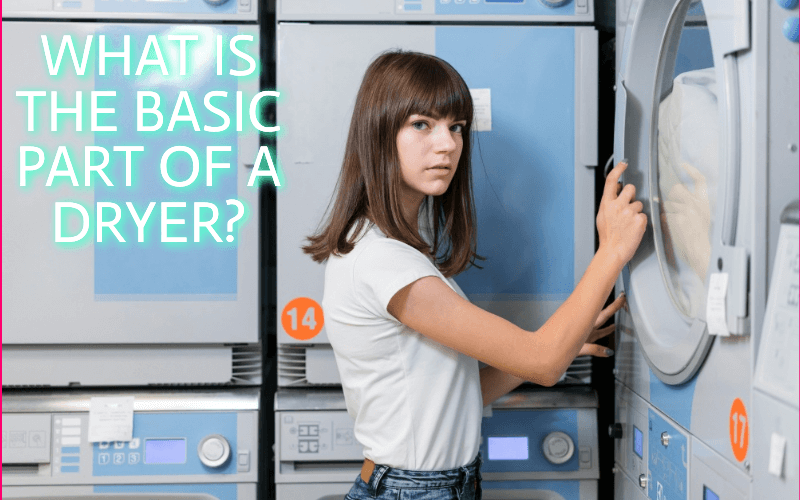
A dryer is made up of several different parts that work together to dry your clothes. The drum is the large container that holds your clothes and spins them around.
The heating element generates the heat that dries the clothes. The motor powers the drum and fan. The thermostat controls the temperature, the timer controls the length of the drying cycle, the lint trap catches debris and lint, the exhaust vent carries the hot air out of the dryer and releases it outside.
The control panel is where you can operate the dryer by selecting different options. Each part plays an important role in the drying process and keeping your dryer running smoothly.
A dryer typically consists of the following basic parts:
- Drum: This is the rotating cylinder where your clothes are placed during the drying cycle.
- Lint filter: This is a removable screen that catches lint and other debris from the clothes as they dry.
- Heating element: This is the component that generates heat to dry the clothes.
- Blower: This component circulates the hot air through the drum and out of the dryer through the venting system.
- Thermostat: This component regulates the temperature inside the dryer, controlling the heating element.
- Timer: This component controls the length of the drying cycle.
- Control panel: This is the section of the dryer where you can set the temperature, select the drying cycle, and start the machine.
- Exhaust Vent: This is the part of the dryer that vents the hot air and moisture outside of the home.
- Door: This is the part of the dryer where you load and unload your clothes.
- Moisture Sensor: Some modern dryers have this component which helps the dryer to detect when the clothes are dry, and automatically stop the cycle.
Note: Different types of dryers (Gas, electric) have different parts and the above list is for general information only.
2.1What's the basic parts of an electric dryer?
- Drum: This is the rotating cylinder where your clothes are placed during the drying cycle.
- Lint filter: This is a removable screen that catches lint and other debris from the clothes as they dry.
- Heating element: This is the component that generates heat to dry the clothes, it is powered by electricity.
- Blower: This component circulates the hot air through the drum and out of the dryer through the venting system.
- Thermostat: This component regulates the temperature inside the dryer, controlling the heating element.
- Timer: This component controls the length of the drying cycle.
- Control panel: This is the section of the dryer where you can set the temperature, select the drying cycle, and start the machine.
- Exhaust Vent: This is the part of the dryer that vents the hot air and moisture outside of the home.
- Door: This is the part of the dryer where you load and unload your clothes.
- Moisture Sensor: Some modern electric dryers have this component which helps the dryer to detect when the clothes are dry, and automatically stop the cycle.
- Electric Cord: This is the cord which connects the dryer to the electrical outlet to power the machine.
Note: Different types of electric dryers may have different features and parts.
2.2what's the basic part of a gas dryer?
The basic parts of a gas dryer are:
- Drum: This is the rotating cylinder where your clothes are placed during the drying cycle.
- Lint filter: This is a removable screen that catches lint and other debris from the clothes as they dry.
- Burner assembly: This is the component that uses natural gas or propane to generate heat to dry the clothes.
- Blower: This component circulates the hot air through the drum and out of the dryer through the venting system.
- Thermostat: This component regulates the temperature inside the dryer, controlling the burner assembly.
- Timer: This component controls the length of the drying cycle.
- Control panel: This is the section of the dryer where you can set the temperature, select the drying cycle, and start the machine.
- Exhaust Vent: This is the part of the dryer that vents the hot air and moisture outside of the home.
- Door: This is the part of the dryer where you load and unload your clothes.
- Gas line connection: This is the part of the dryer that connects the dryer to the gas line to power the burner assembly.
Note: different types of gas dryers may have different features and parts.
3How To Clean Dryer?
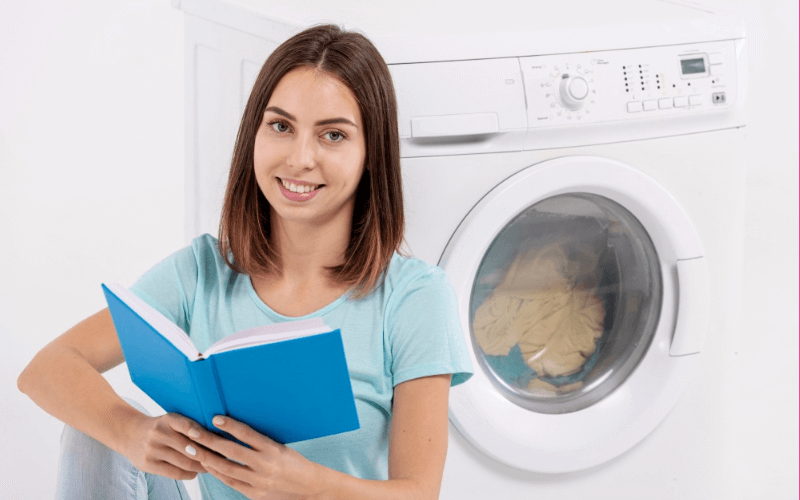
Regular cleaning and maintenance of your dryer is essential to ensure it runs efficiently and safely.
Lint buildup in the machine and venting system can cause a fire hazard and also reduce the machine's performance.
Here, we will provide you with step-by-step instructions on how to effectively clean your dryer, including tips on how to clean the lint trap, drum, venting system, exhaust ducts and vent hood, with the help of household cleaning solutions and tools.
With regular cleaning and maintenance, you can ensure your dryer runs smoothly and safely for years to come.
Note: This guide is designed for homeowners and renters alike who want to keep their dryer in top working order.
Unplug The Dryer

Before you begin cleaning your dryer, it is important to unplug it to avoid any electrical hazards. This will prevent the dryer from turning on while you are cleaning it, which can be dangerous.
Empty The Dryer
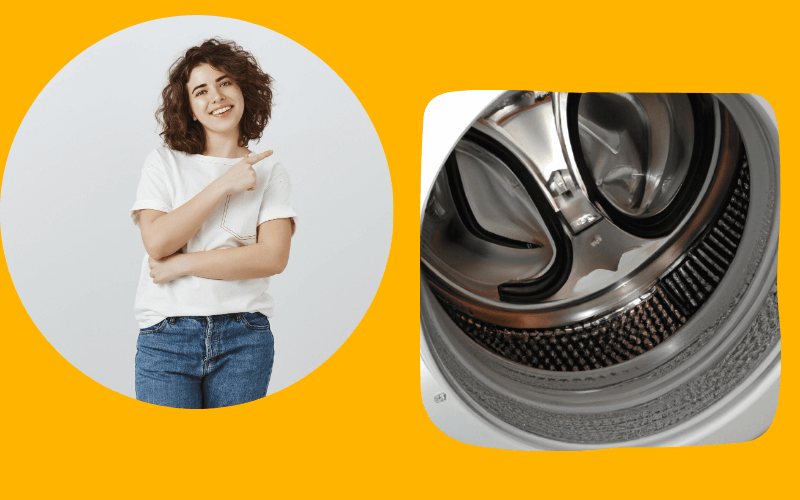
Remove any clothes or items left in the dryer and set them aside. This will make it easier to clean the dryer and ensure that you don't accidentally damage any clothes while cleaning.
Clean The Lint Trap

The lint trap is located at the front of the dryer and should be cleaned before each load of laundry. Use a brush or your fingers to remove any lint or debris that has collected on the screen.
If the lint trap is particularly dirty, you can also clean it with a damp cloth or sponge. Be sure to remove any debris from the crevices of the lint trap. Lint that is not removed from the trap can cause a fire hazard.
Clean The Vent Hose
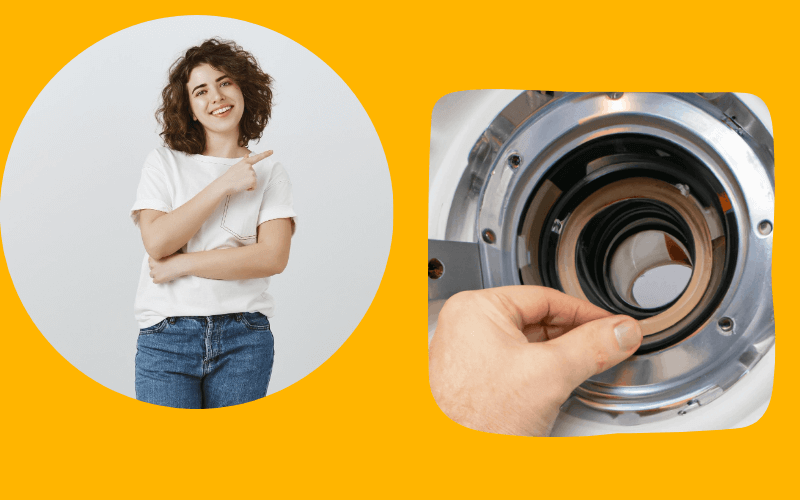
Remove the vent hose from the back of the dryer. Use a long brush or vacuum attachment to clean out the hose. Be sure to remove any lint or debris that has accumulated inside.
You can also use a vent cleaning brush or a vacuum with a hose attachment to clean out the hose. It's important to make sure that the vent hose is clean and free of any blockages because if not, it can cause the dryer to work harder and use more energy which in turn can cause the dryer to overheat.
Clean The Outside Vent

Locate the outside vent where the vent hose connects to on the outside of your home. Use a brush or vacuum attachment to clean out the vent.
Be sure to remove any lint or debris that has accumulated inside. You can also use a vent cleaning brush or a vacuum with a hose attachment to clean out the vent.
Make sure that the vent hood flap is able to open and close properly, if it's stuck open or closed it can cause the dryer to work harder and use more energy which in turn can cause the dryer to overheat.
Clean The Inside Of The Dryer
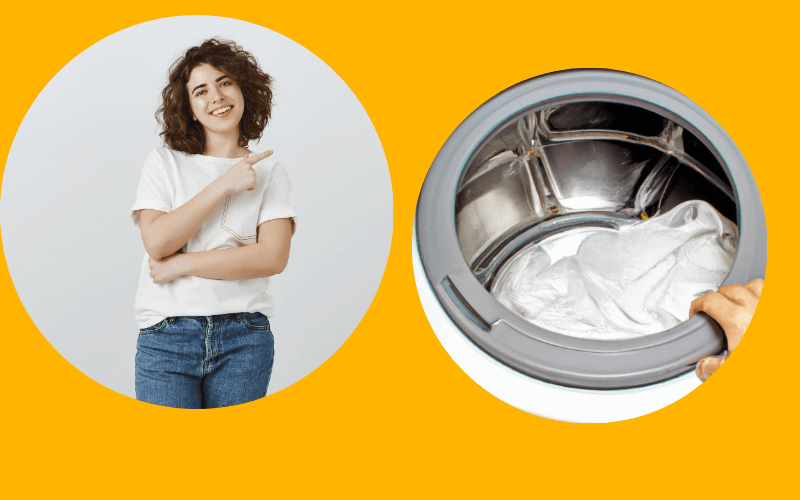
Use a damp cloth or sponge to wipe down the inside of the dryer, including the drum, the seal around the door, and the control panel.
Be sure to remove any lint or debris that has accumulated inside. Pay special attention to the corners and crevices of the dryer, as these are common areas for lint to accumulate.
This step will help to remove any debris or lint that may have been missed during the previous steps and keep the dryer in good condition.
Check The Air Ducts
Check the air ducts inside the dryer for any blockages or debris. Use a long brush or vacuum attachment to clean out the ducts. This step will help to increase the airflow in the dryer and keep it working properly.
Reassemble The Vent Hose And Outside Vent
Once you have finished cleaning the vent hose and outside vent, reattach them to the dryer. Make sure that they are securely attached to prevent any leaks or blockages.
Check For Any Damage
Inspect the dryer for any signs of damage, such as frayed cords, worn hoses, or loose connections. If you notice any issues, it's best to have them repaired by a professional. This step will help to ensure that the dryer is running safely and efficiently.
Run The Dryer Empty
After you have completed all the steps, plug the dryer back in and run it empty for a cycle to ensure that it's working properly.
This will help to remove any remaining debris or lint that may have been missed during the cleaning process.
It will also ensure that all the components are working correctly and that the dryer is heating up properly.
By following these detailed steps, you can help to ensure that your dryer runs efficiently and safely. Remember to clean your dryer regularly, and don't hesitate to call a professional if you notice any problems.
Regular cleaning and maintenance will help to prolong the life of your dryer, and keep it running in top condition.
4washer dryer vs washing machine

A washer-dryer and a washing machine are both appliances used to clean clothes, but they have distinct differences.
A washer-dryer is a combination appliance that allows you to wash and dry your clothes in the same machine, while a washing machine is a standalone appliance that is used to clean clothes by agitating them in water and detergent.
The choice between a washing machine and a washer-dryer will depend on your specific needs and preferences such as laundry needs, available space, budget, wash options, energy and water consumption, and maintenance and repair costs.
Here is more detailed differences between a washer-dryer and a washing machine:
- Capacity
A washer-dryer typically has a smaller capacity than a washing machine. This is because the dryer component of the machine takes up space, reducing the capacity for washing clothes. A washing machine, on the other hand, is designed solely for washing clothes, and therefore has a larger capacity for clothes.
- Efficiency
A washing machine is generally more energy efficient than a washer-dryer. A washer-dryer uses heat to dry clothes, which consumes more energy. Additionally, washing machines typically have a larger variety of wash cycles that can be adjusted to suit the specific needs of the clothes. This allows for a more efficient use of energy and water.
- Cycles and options
Washing machines tend to have more options for different wash cycles and settings, including different temperatures, spin speeds, and load sizes. This allows you to customize your wash to the specific needs of your clothes. Washer-dryers typically have fewer options for wash cycles, as the focus is mainly on the drying process.
- Cost
Washing machines tend to be less expensive than washer-dryers. This is because washer-dryers are a combination of two appliances in one and therefore tend to be more expensive.
- Size And Space
Washing machines are typically smaller than washer-dryers, which means they take up less space. This can be beneficial if you have limited space in your home. Washer-dryers, on the other hand, can save space as they eliminate the need for a separate dryer, but they are larger in size.
- Maintenance
Washing machines tend to be less complicated than washer-dryers and therefore, are generally easier to maintain and repair. Washer-dryers have more components and functions, making them more complex and in turn requiring more maintenance and repairs.
- Wash Quality
Washing machines are generally better at providing a thorough wash as they have more wash cycles and options which can be adjusted to suit the specific needs of the clothes. Washer-dryers tend to have fewer wash cycles, and therefore, may not provide the same level of cleanliness as a washing machine.
 Pro Tip
Pro TipBoth washing machines and washer-dryers have their own advantages and disadvantages.
If you have a large family or do laundry frequently, a washing machine might be a better choice.
However, if you have limited space and want to save time and effort, a washer-dryer is a good option.
It's important to carefully consider your needs and preferences before making a decision.
5Final Thoughts On Clean A Dryer
It is always best pratice for keeping your dryer clean and well-maintained is essential to ensure it runs efficiently and safely.
We know that regular cleaning can prevent lint buildup, reduce fire hazards, and extend the life of your dryer.
We hope that this guide has provided you with valuable information and step-by-step instructions on how to clean your dryer like a pro.
We encourage you to follow these guidelines and tips to keep your dryer running smoothly and safely for years to come.
Remember to always unplug your dryer before cleaning and make sure to follow the manufacturer's instructions and safety precautions.
If you have any doubts or concerns, it is always best to consult with a professional.
Thank you for reading and we wish you the best of luck with your dryer cleaning.
1Faqs About Clean A Dryer
why does my dryer keep saying clean filter?
A message to clean the filter on a dryer may be caused by lint buildup in the filter, a malfunctioning sensor, not cleaning or replacing the filter as needed, or dirty ducts that are reducing airflow. It's important to follow the manufacturer's instructions and clean the filter regularly to prevent lint buildup and ensure the dryer is working properly. If the problem persists, it may be necessary to have a professional check and clean the ducts or the sensor if the dryer has one.
How Often Should Clean Dryer Vent
It is recommended to clean your dryer vent at least once a year or more frequently if you notice any signs of clogging. A professional inspection and cleaning should be done if you have a gas dryer. If you have an electric dryer, it's recommended to have a professional inspect the venting system as well. Regularly check the outside vent hood to ensure it is not clogged with lint or debris. Cleaning and maintaining your dryer vent can ensure it runs efficiently and safely and also can help to prevent fire hazards.
Can steam dryer replace dry cleaning?
A steam dryer can help to reduce the need for dry cleaning, as it can remove wrinkles and freshen clothes without the need for harsh chemicals. However, it may not be able to fully replace dry cleaning for certain fabrics and types of stains that require specialized cleaning methods. Steam dryers are best for refreshing and deodorizing clothes, but not all fabrics can handle the heat and moisture, it's important to read the care label before using the steam function. It's always best to consult with a professional if you have any doubts about a specific stain or fabric. Steam dryers can be a great addition to your laundry routine but it is not able to fully replace dry cleaning.
Do you need to clean your dryer?
Yes, it is important to clean your dryer to ensure it runs efficiently and safely. Lint and debris can build up in the lint filter, drum, and venting system over time, reducing air flow and making it more difficult for the dryer to dry clothes effectively. A clogged lint filter can also be a fire hazard. It is recommended to clean the lint filter after every load, to regularly check the outside vent hood and the ducts that vent the dryer, to ensure they are not clogged with lint and debris, and to clean the dryer at least once a year or more frequently if you notice any signs of a clogged vent, such as clothes taking longer to dry, the dryer getting too hot or a musty smell coming from the dryer.
How much does dryer cleaning cost?
The cost of cleaning a dryer can vary depending on location, type of service, and whether it is done by a professional or by yourself. Doing it yourself can cost a few dollars to around $30. Hiring a professional service can cost from $50 to $150 on average. A more extensive cleaning or duct replacement may cost more. Regular cleaning and maintenance can prevent costly repairs and extend the life of the dryer.











